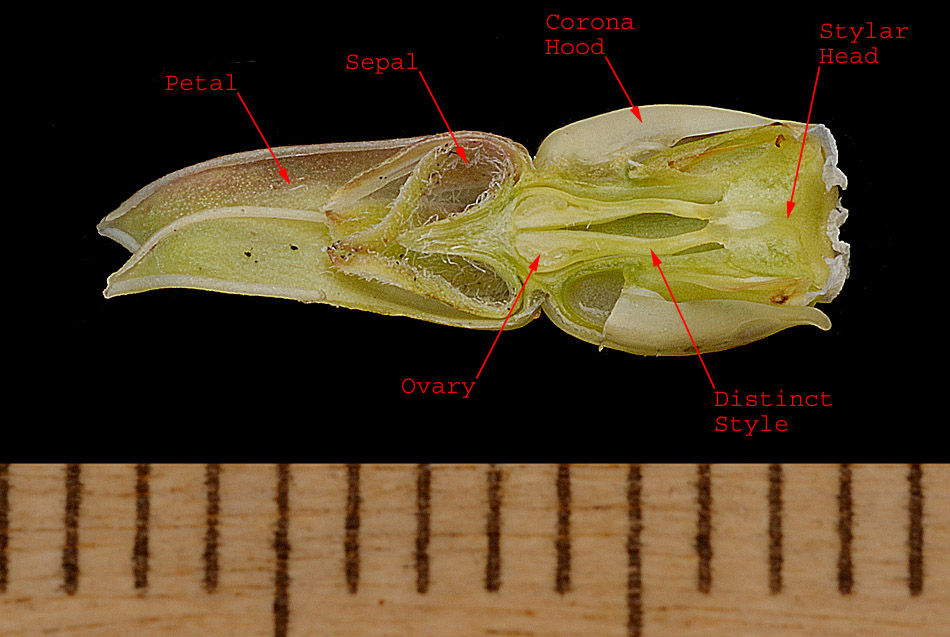
Green Milkweed
Asclepias viridiflora

Green Milkweed
Flower Longitudinal Section
Oro Lake Regional Park
12-July-2010
Note the two distinct ovaries, and the two styles that are distinct except at their apexes where they are joined to form the stylar head.
In the interior of the flower there are two distinct ovaries. The two styles are also distinct except at their apexes where they are united to form a large, green stylar head. Five large, green stamens are united to form a tube around the styles and stylar head. The upper portion of each stamen is the anther and the united anthers collectively comprise the anther head. Each anther is topped with a white anther appendage. Each anther also has two marginal anther wings. There is a slit called a guide rail between the anther wings of adjacent anthers. The pollen grains are aggregated into two masses, each called a pollinium and located next to an anther wing. Two pollinia from adjacent anthers are connected to each other by an acellular, wishbone-shaped structure called a translator. The translator has two translator arms which meet at the top of the guide rail in a clip-like structure called the corpusculum. The other end of each translator arm is connected to a pollinium.
When a pollinating insect lands on the flower, a leg or other appendage gets caught in the guide rail. The guide rail guides the insect up to the corpusculum which snaps onto the appendage. When the insect attempts to fly away, the translator and the two attached pollinia are removed from the flower as a single unit. Often the insect will then land on another flower and deposit the pollinia in that flower's guide rail. The stigmatic portions of the stylar head are directly behind the guide rails allowing fertilization.
There are five hood-shaped structures, collectively known as the corona, which surround the anther head. Both the petals and sepals are reflexed and therefore do not obscure the rest of the flower.
Viridiflora: Answers to key questions in Budd's Flora and Flora of Alberta leading to this species.
| |||||||||||||||||||||
Asclepiadaceae: Answers to key questions in Budd's Flora leading to this family.
|